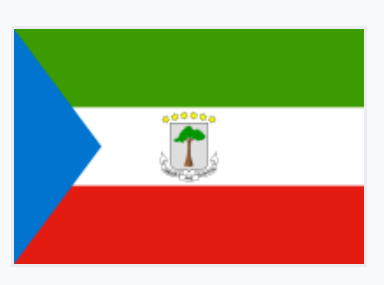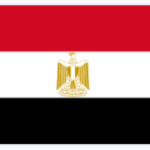If you are interested in learning more about Equatorial Guinea, a small country on the west coast of Africa, you have come to the right place. In this blog post, I will share some facts and insights about this fascinating nation, its history, culture, and people.
Equatorial Guinea, officially the Republic of Equatorial Guinea (Spanish: República de Guinea Ecuatorial, French: République de Guinée équatoriale, Portuguese: República da Guiné Equatorial), is composed of two parts: an insular region and a mainland region. The insular region consists of the islands of Bioko (formerly Fernando Pó) in the Gulf of Guinea and Annobón, a small volcanic island which is the only part of the country south of the equator. The mainland region, also known as Río Muni or Continental Equatorial Guinea, is bordered by Cameroon to the north and Gabon to the east and south. The country covers an area of 28,000 square kilometres (11,000 sq mi) and has a population of about 1.7 million people (2022 estimate).
Equatorial Guinea was formerly a colony of Spain with the name Spanish Guinea. It gained its independence on October 12, 1968, after a referendum in which the majority of the people voted for self-rule. Since then, the country has been ruled by two presidents: Francisco Macías Nguema (1968-1979) and his nephew Teodoro Obiang Nguema Mbasogo (1979-present). The latter is Africa’s longest-serving leader and has been accused of human rights violations, corruption, and authoritarianism by international organizations and critics. The country is also one of the world’s largest oil producers per capita, but most of its citizens live in poverty and lack basic services.
Equatorial Guinea has a rich and diverse culture that reflects its ethnic and linguistic diversity. The country has three official languages: Spanish, French, and Portuguese, as well as several recognized regional languages such as Fang, Bube, Annobonese Creole, Kombe, and Kwasio. The Fang people are the largest ethnic group in the country, accounting for about 85% of the population. They are followed by the Bubi people, who are indigenous to Bioko island and make up about 6.5% of the population. Other ethnic groups include the Ndowe, Annobonese, Bujeba, and others.
The country’s culture is also influenced by its colonial history and its location near the Equator. Some of the most popular festivals in Equatorial Guinea include Christmas, New Year’s Day, Carnival, Easter, Independence Day (October 12), President’s Day (June 5), and Armed Forces Day (August 3). The country also has a vibrant musical scene that features genres such as makossa, soukous, reggae, hip hop, and afrobeat. Some of the most famous musicians from Equatorial Guinea include Piruchi Apo Botupá, Hijas del Sol (The Sun’s Daughters), Nélida Karr, Anfibio MCs, Barón Ya Buk-Lu, and others.
Equatorial Guinea is a country that offers many attractions for visitors who want to explore its natural beauty, cultural heritage, and modern development. Some of the places that you can visit in Equatorial Guinea include:
- Malabo: The capital city of Equatorial Guinea and its largest city. It is located on Bioko island and has a mix of colonial and modern architecture. You can visit landmarks such as the Cathedral of Santa Isabel, the Presidential Palace, the National Museum, the Cultural Centre of Spain in Malabo (CCEM), and others.
- Monte Alén National Park: A protected area on the mainland that covers about 2,000 square kilometres (770 sq mi) of tropical rainforest. It is home to many species of wildlife such as gorillas, chimpanzees, elephants, leopards.








